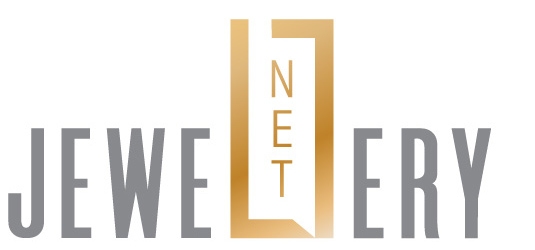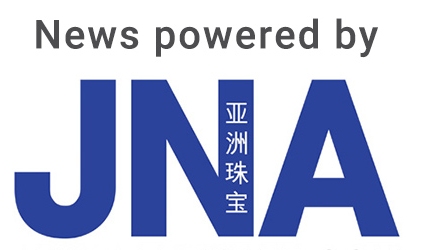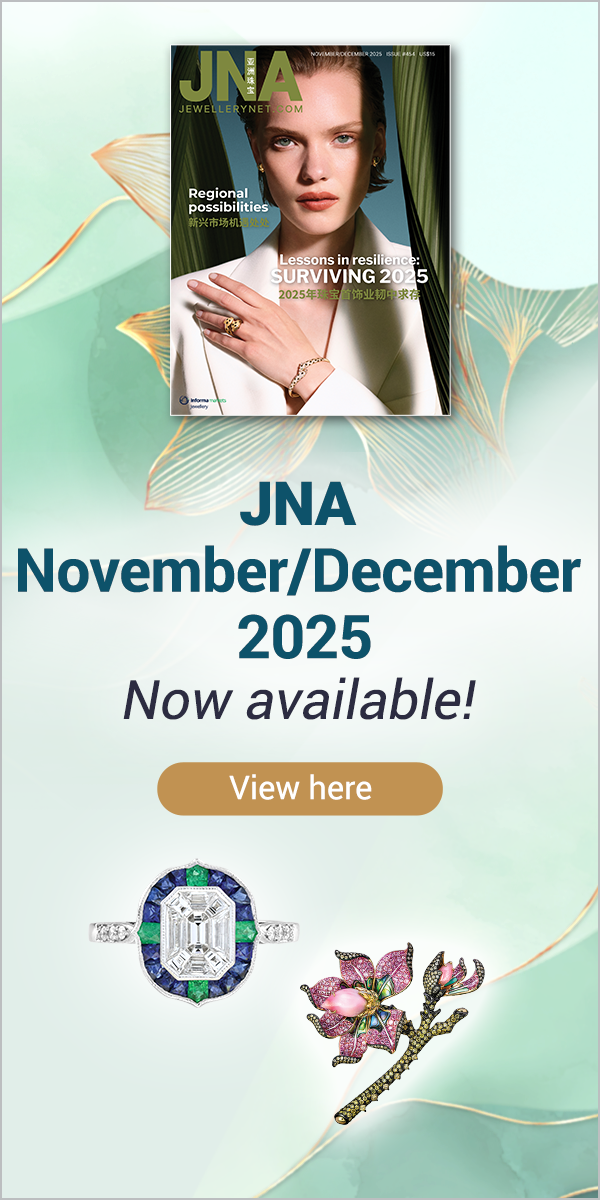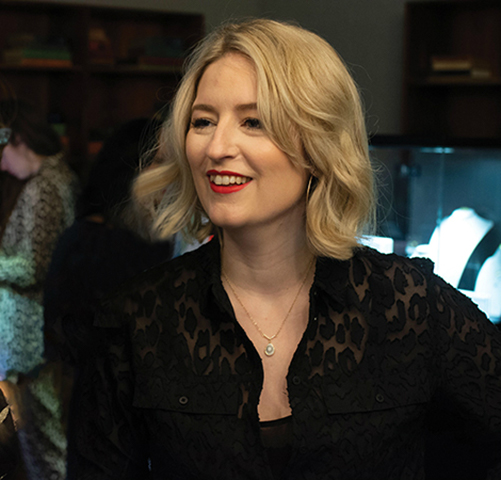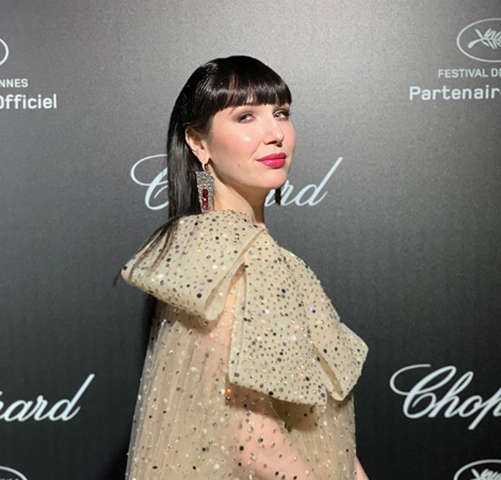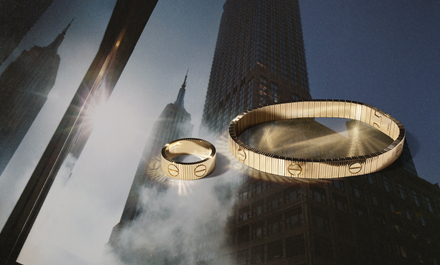KOIs or Key Opinion Influencers are increasingly shaping discourses and perceptions in the jewellery scene, particularly in the areas of design and branding. JNA takes a deep dive into the world of jewellery influencers, examining its evolution into a business strategy and its growing appeal as a marketing channel.
The influencer culture, which has become a formidable marketing tool in the fashion and beauty industries, is steadily making waves in the jewellery sector.
In popular media parlance, influencers are defined as a group of Internet-savvy individuals who have amassed millions of social media followers through digital platforms where they post content and plug various brands.
In the business world, influencer marketing is a phenomenal, direct-to-consumer approach that uses social media tools and tactics to promote and sell goods. The method has proven to be extremely effective.
It essentially involves a company indirectly obtaining access to an influencer’s audience through his or her online channels.
A relatively new term in the influencer community is the so-called key opinion influencer (KOI) – a cross between a key opinion leader (KOL) and an influencer.
KOLs are known experts in their fields who don't necessarily operate in the social media realm but are influential just the same. He or she has a particular audience and usually covers a specific niche. Examples of KOLs are educators, politicians or journalists, to name a few.
A number of KOLs are already, or have yet to become, social media influencers. Influencers, on the one hand, specialise in a variety of topics and often cover a larger audience.
They are not an entirely new phenomenon though. Their presence has spanned many decades – from aristocrats to movie stars, singers and supermodels. The 2000s ushered in the bloggers’ era and the exponential rise of social media influencers.
The fashion and beauty industries have benefitted from influencer marketing in an unprecedented way but the jewellery sector has yet to fully tap this business potential. One reason is that fine jewellery does not sell as quickly as the latest lipstick or skincare product. Trust and authority are critical in marketing and communications in the jewellery world.
Perhaps it was a step in the right direction to wait for the market to become more mature before influencers could enter the picture.
The jewellery KOI
Katerina Perez is a well-known KOI in the jewellery sector, with 12 years of experience in the jewellery trade, seven of those spent as an influencer. She previously worked in jewellery retail and paid people to help manage her website before transitioning into influencer marketing.
“At the time, I felt that I was doing a good enough job to start asking for sponsored content and some brands believed in me. I spent two years finding my feet in the influencer market before I could finally say I was an entrepreneur,” noted Perez. Her Instagram account,
@katerina_perez, has more than 300,000 followers. Her titular website features various jewellery brands, particularly new collections as well as interviews with key personalities in the trade. She is also a social media, brand-building and visual communications consultant.
Ya’akov Almor, a strategic consultant and marketing expert in the international diamond and gem industry, underscored the unique appeal of influencers.
“In the B2C jewellery arena, emotion is just one of the elements factored into the product’s development and creation,” he noted. “Since we have yet to see the full extent of the economic crisis, jewellery businesses can benefit from an influencer’s insights on creating products that appeal to consumers’ mood and mindset.”
Paola de Luca, co-founder of Trendvision Jewellery + Forecasting, however said one post by any famous KOI will not make a difference since companies need a 360-degree marketing strategy that involves a holistic approach, including digital presence.
Why work with a KOI
A KOI can help companies target their ideal audience faster since she or he has done all the work: Content creation and building a client base around a specific interest, according to US software product developer and marketer HubSpot.
With 82 per cent of consumers saying they follow influencers’ recommendations, impact on the bottom line is potentially huge, it added.
In principle, influencers can help increase a brand’s reach by co-creating a series of content with them. They would then spread the word through their social platforms. Influencers normally produce unique content and sometimes permanent backlinks.
On average (non-jewellery specific), the return on investment (ROI) is US$6.50 on every dollar spent, HubSpot revealed.
Perez noted that jewellery companies should consider a number of things before hiring an influencer. She said, “Designers and brands should work with someone like me only when they are ready for promotion. They should examine their jewellery, website and social media channels, and ask themselves: Would influencers be interested in what they see?”
Working with a KOI is a collaboration, but brands should not rely solely on a blogger or influencer to advertise their products. A brand’s offerings should be attractive enough to potential clients that they would want to buy the jewellery.
According to jewellery editor and journalist Rachael Taylor, influencers are “all about presenting a view of the world from their perspective, so brands should use their creativity to push boundaries and take their jewellery collections to new places and audiences.” She posts jewellery-related content on her Instagram account @rachaeltaylorgram.
De Luca meanwhile said jewellers should educate themselves on how to team up with an influencer. “Over the past months, we have seen a growing transformation to digital. The mix between the physical and the digital experience, or the so-called ‘phygital’ world, is here and we need to embrace it. It is only now and due to the Covid-19 crisis that we are starting to understand the role a good KOL can fulfil in the jewellery sector,” she noted.
Finding the right KOI
Influencer Tracey Ellison, who built an impressive Instagram presence with more than 720,000 followers on @thediamondsgirl, recommends checking if the values of an influencer that brands want to work with are in sync with theirs. She admits she is no jewellery expert but her community of followers was built upon authenticity.
“My philosophy is clear: I am no model; I am no youngster. I am a real woman who wears jewellery,” explained Ellison.
Finding the right KOI is not as difficult as it may sound. Companies should keep in mind that the number of followers is not always the best gauge. Does the KOI reflect the ideals that the brand stands for? Is her content interesting? How is she perceived by her audience? What media does she use? And more importantly, are her followers the audience that the company needs? Are they potential clients?
Barbara Palumbo, a freelance writer and host of jewellery and watch podcast, The Barb Wire, acknowledged the growing importance of social media channels in marketing, particularly Instagram, which could soon surpass Facebook. Palumbo’s two Instagram accounts, @adornmentality and @whatsonherwrist, have a combined following of more than 20,000.
She however pointed out the distinctions between a journalist and an influencer – the former writes for a specialist audience while the latter creates content as part of a marketing strategy. Also, influencers have turned into commercial entities by charging for their market-shaping services.
Trendvision’s de Luca commented that B2B influencing is about insights, network, knowledge, and persistence.
KOIs rarely cover both B2B and B2C buyers. This author, for instance, maintains a site that is aimed at both audiences, thanks to 28 years of all-round experience in the jewellery industry. This in turn gives her a much stronger voice in the B2B arena, hence a larger following of 34,000 on LinkedIn, rather than Instagram.
B2B collaborations
When British actress Sophie Turner wore a dress from clothing brand Choosy to a red-carpet event, the company’s sales rose 10 per cent in less than a week.
But working with a KOI is not always ROI-oriented. Sometimes it is about gaining buyers’ trust and building credibility. Studies showed that 86 per cent of fashion companies utilise influencer marketing despite dwindling engagement rates. Data from McKinsey’s State of Fashion report showed that the engagement rate for sponsored posts on Instagram dropped from 4 per cent in the first quarter of 2016 to 2.4 per cent in Q1 2019. The rate was 0.37 per cent on Facebook and 0.05 per cent on Twitter.
In terms of fees, celebrity influencers can charge up to US$1 million per post. It’s a different story for the jewellery KOI sector.
Perez said there is no price benchmark since these depend on each KOI. “As a rule, before working with a brand, I discuss their goals to understand what they want to achieve. I do not have a fit-for-all price list. My fees are very fair, and they are based on my running costs, not the size of the company I work with,” she explained.
The KOI future
According to Almor, influencers rate their success by the number of followers they engage with and the percentage of sales generated. They appeal to their followers emotionally, and this perceived relationship is crucial to influencing buyers’ opinions.
In a post-coronavirus setting however, consumers will need to feel a deeper connection with the influencer.
“With the economy tanking and with less discretionary income in the market, the added value offered to the consumer needs to be a combination of product, reassurance and comfort. ‘Comfort buying’, and not ‘revenge spending’, is going to be the key to consumers’ hearts and wallets,” shared Almor.
Storytelling and co-created media productions are also on the rise in the marketing scene. An example is Ralph Lauren’s tie-up with arts and lifestyle news website Highsnobiety on stories about the brand’s impact on various groups of people.
Gaming platforms are likewise gaining traction by selling advertorial space to companies.
Working with KOIs could mean taking a collaborative approach one step further. Co-creation, storytelling, media production, authenticity, authority, inclusivity and relevance will become increasingly important as influencer marketing gradually shifts from thinking in quantity to quality.
